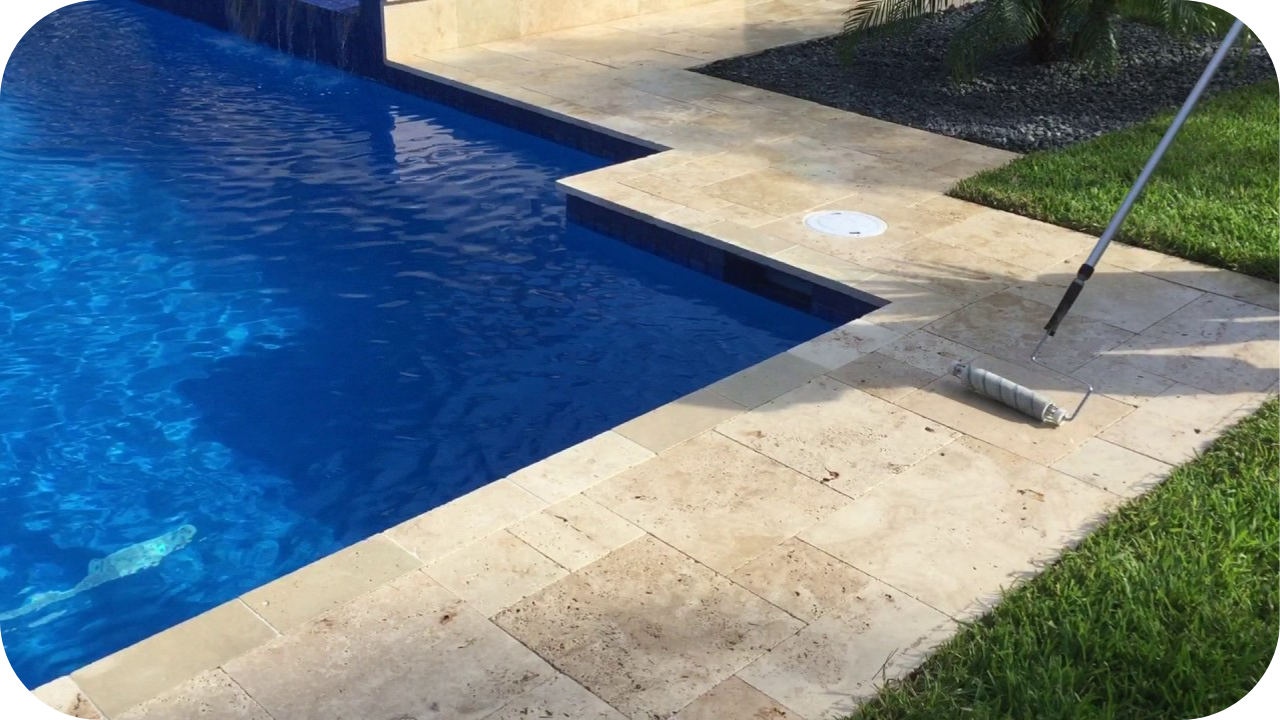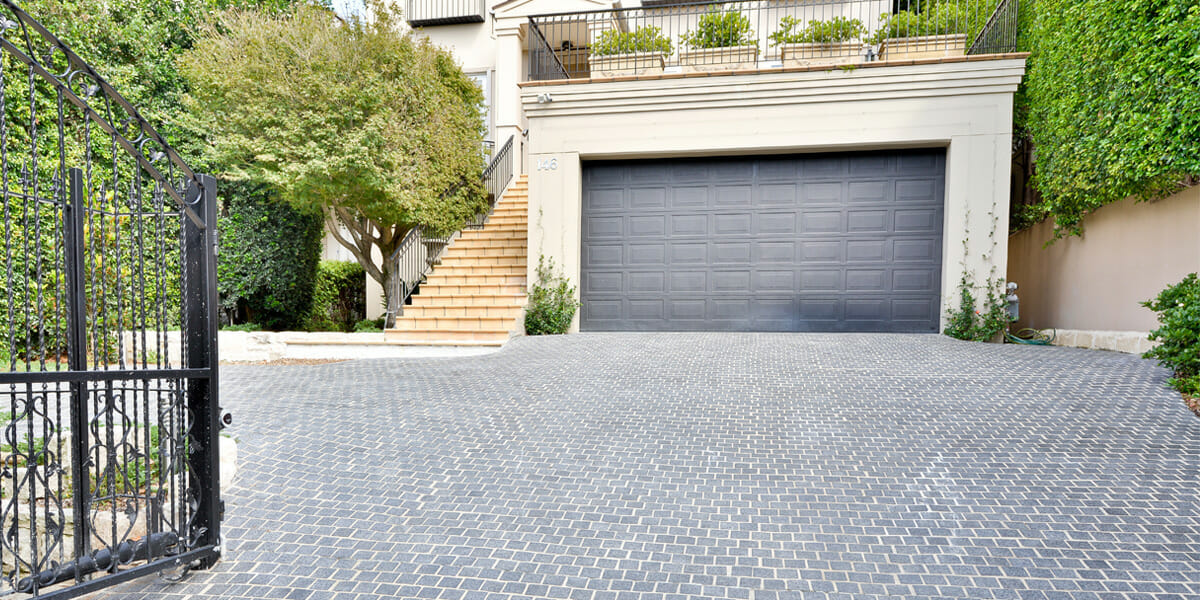
Travertine is a popular and versatile natural stone commonly used in flooring, walling, and outdoor paving applications. Due to its porous nature, sealing is essential to protect it from stains, moisture, and wear.
Proper sealing not only preserves the stone’s appearance but also extends its lifespan. By following proper sealing practices, you can keep your travertine surfaces looking great and functioning optimally for years to come.
In this article, we will discuss how often travertine should be sealed, key factors that affect sealing frequency, and helpful tips for sealing travertine correctly.
How Often Does Travertine Need to Be Sealed?
Travertine should typically be sealed every 1–2 years to maintain its durability and appearance. High-traffic or wet areas, such as kitchens, bathrooms, or pool decks, may require annual sealing, while low-use or indoor surfaces can last 2–3 years. Regular sealing protects the stone from stains, moisture, and wear, extending its lifespan and keeping it looking great.
Factors That Affect Sealing Frequency
Several factors influence how often travertine should be sealed. These elements determine the level of wear and tear your stone faces, helping you identify the right time to reseal and maintain its longevity.
1. Indoor vs Outdoor Use
Outdoor travertine is exposed to harsher elements like rain, UV rays, and dirt, requiring more frequent sealing (every 1–2 years). Indoor surfaces, shielded from these elements, may only need resealing every 2–3 years, depending on their use.
2. Surface Finish
Tumbled and honed finishes are more porous and absorb more moisture and dirt, needing resealing every 1–2 years. In contrast, polished finishes are denser and typically require resealing every 2–3 years, offering longer-lasting protection.
3. Traffic and Usage
High-traffic areas like hallways and kitchens face constant wear, making annual resealing necessary to protect from stains and dirt. In comparison, low-traffic or vertical surfaces like walls can go 2–3 years without resealing, maintaining their condition longer.
4. Climate and Weather
Travertine in tropical or coastal climates with high humidity and salt exposure requires resealing every year to combat the harsh elements. In milder, dry climates, sealing every 2–3 years is sufficient to keep the stone protected.
5. Type and Quality of Sealer Used
Penetrating sealers offer deeper protection and last longer, meaning resealing can be done less frequently. Topical sealers, while providing an immediate finish, wear off faster, requiring resealing every 1–2 years for continued protection.
How to Know If Your Travertine Needs Resealing
It’s essential to keep an eye on your travertine surfaces to make sure they remain properly sealed. Below are key indicators that suggest it’s time for resealing to maintain your stone’s protection and appearance.
1. Perform the Water Test
To perform the water test, drop a few droplets onto the surface of your travertine. If the water beads up and doesn’t soak in, the seal is still effective. However, if it absorbs quickly, the stone needs resealing.
2. Faded Colour or Dull Finish
When your travertine’s natural colour starts to appear faded or the finish looks dull, it’s likely the sealer has worn off. Resealing restores the vibrancy of the stone, making it look fresh and maintaining its original beauty.
3. Increased Susceptibility to Staining
If stains start to penetrate more easily and become difficult to remove, it’s a clear sign that the sealer has broken down. Resealing will help protect the stone from future stains and keep it looking pristine.
4. Visible Mould or Discolouration in Damp Areas
Mould or discolouration, particularly in areas prone to moisture like bathrooms or outdoor spaces, indicates that the sealer is no longer effective. Resealing will protect the stone from water damage and prevent further issues such as mould growth.
5. Noticeable Cracking or Damage
If you notice any cracking or damage to your travertine, it could be a sign that the sealer has worn off, leaving the stone vulnerable to further deterioration. Resealing can help prevent additional damage and restore the stone’s protection.
Tips for Sealing Travertine Correctly
Sealing your travertine properly is essential for maintaining its beauty and durability. Here are some key tips to ensure the sealing process is done effectively and your stone remains well-protected.
- Clean the Surface Thoroughly: Ensure the surface is clean and free of dust, dirt, or stains before sealing. Use a pH-neutral cleaner to prevent surface damage and ensure proper adhesion of the sealer.
- Use a pH-Neutral Cleaner: Avoid acidic or abrasive cleaners that can damage the stone. A pH-neutral cleaner is gentle on the surface and helps prepare the stone without causing any harm.
- Apply Sealer Evenly: Use a soft cloth or applicator to apply the sealer evenly. This prevents uneven patches, streaks, or areas where the sealer may wear off prematurely, ensuring an even finish.
- Allow Proper Curing Time: After applying the sealer, allow it to cure fully according to the manufacturer’s instructions. Rushing the drying process may cause the sealer to bond incorrectly and damage the finish.
- Test on a Small Area First: Before applying the sealer to the entire surface, test it on a small, inconspicuous area to ensure compatibility with the stone and check for any adverse reactions.
- Follow Manufacturer’s Guidelines: Always refer to the sealer’s instructions for proper application, drying time, and maintenance. Adhering to these guidelines ensures that you achieve optimal protection and longevity for your travertine.
How to Maintain Your Travertine Between Sealing Applications
Maintaining your travertine surfaces between sealings is crucial to keeping them looking their best and avoiding unnecessary damage. Here are essential maintenance tips to help preserve your travertine until the next sealing.
- Sweep and Rinse Regularly: Sweep your travertine surfaces regularly to remove dirt and debris that can scratch or dull the stone. Rinse the area with water to prevent the build-up of grime and keep the stone looking fresh.
- Use Coasters, Mats, and Rugs in Busy Zones: Place coasters on countertops, mats on floors, and rugs in high-traffic areas. These items help prevent scratches, stains, and moisture from damaging your travertine, especially in kitchens and bathrooms.
- Blot Spills Quickly: Clean up spills as soon as possible, especially acidic liquids like vinegar, wine, or citrus, which can damage the stone. Blot, don’t wipe, to avoid spreading the stain or damaging the surface.
- Reapply Sealer as Part of a Seasonal or Annual Care Plan: Make reapplying the sealer part of your regular maintenance schedule. Every season or year, inspect your travertine for signs of wear and reapply sealer to ensure continuous protection against moisture and stains.
- Avoid Harsh Chemicals: Avoid using harsh chemicals, such as bleach or acidic cleaners, on your travertine surfaces. These can damage the stone and strip away the sealer. Stick to mild, pH-neutral cleaners to preserve the stone’s integrity.
Conclusion
Maintaining and sealing your travertine correctly ensures its longevity and beauty. By understanding when and how often to reseal and following proper maintenance practices, you can protect your stone from damage.
Regular care, such as cleaning, blotting spills, and reapplying sealer, will keep your travertine surfaces looking great for years. For expert advice and sealing services, don’t hesitate to consult professionals at Splendour in Stone.
More To Explore

Grey Granite Cobblestones for Driveways: Strength and Style
Grey granite cobblestones combine strength, safety, and timeless appeal, making them a popular choice for Melbourne driveways and outdoor spaces. Their natural flamed texture offers

Granite Wall Cladding Melbourne: Modern and Classic Appeal
Granite wall cladding brings both modern sophistication and classic charm to Melbourne architecture. Known for its durability and natural beauty, granite transforms façades, feature walls,


